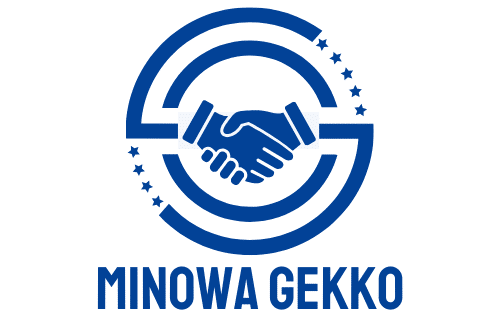What’s the Best Way to Set Up a Low Energy Consumption Home Data Center?

As our digital world expands, the need for data centers at home is becoming more and more inevitable. Home data centers are instrumental in managing, storing, and processing vast amounts of data from various aspects of our lives. However, one of the significant challenges faced by homeowners and tech enthusiasts is the high energy consumption associated with running these data centers. This article aims to provide you with practical insights on how to set up a low energy consumption home data center. Using a mix of energy-efficient equipment, smart cooling systems, and advanced management practices, you can significantly reduce your data center’s power usage.
Choosing the Right Equipment for Your Data Center
The first step in creating an energy-efficient home data center is choosing the right equipment. When it comes to servers and storage devices, focus on selecting models recognized for their energy efficiency. Newer models of servers tend to be more energy efficient than older ones, so it may be worth investing in the latest equipment if possible.
A découvrir également : What’s the Best Approach for Non-Toxic Pest Control in a Home with Young Children?
Moreover, consider virtualizing your servers. Server virtualization allows you to run multiple virtual servers on one physical server, thereby reducing the amount of physical equipment needed and, consequently, the energy used. Moreover, you should look into data storage solutions that offer power-saving features, such as hard drives that spin down when not in use.
It’s also vital to consider the energy efficiency of other equipment in your data center, like networking devices and power distribution units. Equipment with built-in power management features can significantly reduce your data center’s energy consumption.
A découvrir également : What Are the Best Non-Electric Water Filters for a Self-Sufficient Home?
Optimizing Cooling Systems
As you probably already know, data centers generate a lot of heat. And managing this heat is critical to maintaining the efficiency and longevity of your equipment. Traditional air cooling methods can consume a lot of energy, so it’s worth exploring more efficient alternatives.
One increasingly popular solution is liquid cooling. Liquid cooling systems use a coolant to absorb heat from the servers, which is then expelled outside the data center. These systems can be more efficient than air-based cooling systems, especially in warmer climates.
Another option is to leverage the ambient temperature outside the data center. This approach, known as "free cooling," uses outside air to cool the data center when the outside temperature is lower than the data center temperature. Implementing a free cooling system can significantly decrease your data center’s energy usage.
Efficient Use of Space
The layout of your data center can have a significant impact on energy consumption. Take advantage of hot aisle/cold aisle layout strategies to improve air circulation and reduce cooling requirements. In this setup, alternate rows of server racks face each other, creating ‘hot’ aisles and ‘cold’ aisles. The hot aisles contain the rear of the servers, where hot exhaust is emitted, while the cold aisles contain the fronts of the servers, which intake cool air.
Also, using blanking panels in your server racks can prevent hot air from mixing with cold air, improving cooling efficiency. Similarly, sealing gaps in your data center floor can prevent cold air from escaping, further enhancing cooling effectiveness.
Effective Power Management
Being proactive about power management is another key strategy in creating an energy-efficient home data center. Utilize power management software that enables you to monitor and control energy usage across your data center. With such tools, you can detect inefficiencies and resolve them promptly.
In addition, use power management features built into your equipment. For example, many servers come with built-in power management capabilities that can reduce power consumption during periods of low workload.
Regular Maintenance and Monitoring
Finally, regular maintenance and monitoring are vital for maintaining the efficiency of your data center. Regularly check your servers, storage devices, and other equipment to ensure they’re functioning optimally. Replace any faulty or outdated components promptly to prevent them from drawing unnecessary power.
Also, monitor the temperature and humidity levels in your data center to ensure they’re within acceptable ranges. High temperatures can make your cooling system work harder, while high humidity levels can lead to condensation, which can damage your equipment.
In conclusion, setting up a low energy consumption home data center is not an easy task. It requires careful planning, choosing energy-efficient equipment, optimizing cooling systems, managing space efficiently, effective power management, and regular maintenance and monitoring. However, with the right approach and commitment, you can create a home data center that not only meets your data storage and processing needs but also is kind to the environment and your wallet.
Implementing Renewable Energy Solutions
The use of renewable energy sources is another effective approach to reducing the energy consumption of your data center. The growing popularity of green energy solutions can be attributed to their potential not only to cut down on power consumption but also to reduce the carbon footprint of your data center.
Solar energy, for instance, could be an excellent renewable energy resource for your home data center. Solar panels can be installed on the roof of your home to harness the power of the sun, which can then be used to power your data center. It’s important to note that the effectiveness of solar energy as a primary power source greatly depends on your geographical location and the amount of sunlight your area receives.
Apart from solar energy, wind energy could also be considered. Similar to solar, the feasibility of wind energy as a power source for your data center will depend on the wind patterns in your region. For areas with consistent wind patterns, a wind turbine could provide a significant portion of your energy needs.
An added advantage of incorporating these renewable energy resources is potential energy storage. Excess power generated can be stored in batteries for use during periods of low renewable energy production, further enhancing your data center energy efficiency.
Utilizing DCIM Software
Data center infrastructure management (DCIM) software is a pivotal tool in setting up a low energy consumption home data center. DCIM software provides an integrated view of all the resources in a data center, enabling you to monitor and manage energy consumption effectively.
DCIM software can track real-time energy usage across your entire data center, providing visibility into areas of high power consumption. It can identify underutilized servers that can be either shut down or consolidated, reducing energy waste.
Additionally, DCIM software can provide predictive analytics that help anticipate and manage power usage based on workload patterns. This can help optimize energy usage and prevent overloading of power circuits.
An added benefit of DCIM software is its ability to assist in maintaining optimal environmental conditions in your data center. It can alert you to any changes in temperature or humidity levels that could affect the performance of your data center, allowing you to take immediate action.
Conclusion
In summary, setting up a low energy consumption home data center is an attainable goal. It involves strategically selecting energy-efficient equipment, optimizing cooling systems, implementing best practices in space utilization, effectively managing power usage, and regularly maintaining and monitoring your data center infrastructure.
The integration of renewable energy sources and the utilization of DCIM software could further enhance your energy efficiency, reduce power consumption, and result in significant long-term savings. Although the initial setup might seem daunting, the long-term benefits of a low energy consumption home data center cannot be overstated.
Remember, energy efficiency is not just about reducing costs; it’s also about being a responsible digital citizen by minimizing the environmental impact of our data-driven lives. As our reliance on digital data continues to grow, it’s essential to balance our data needs with sustainability and energy conservation.
